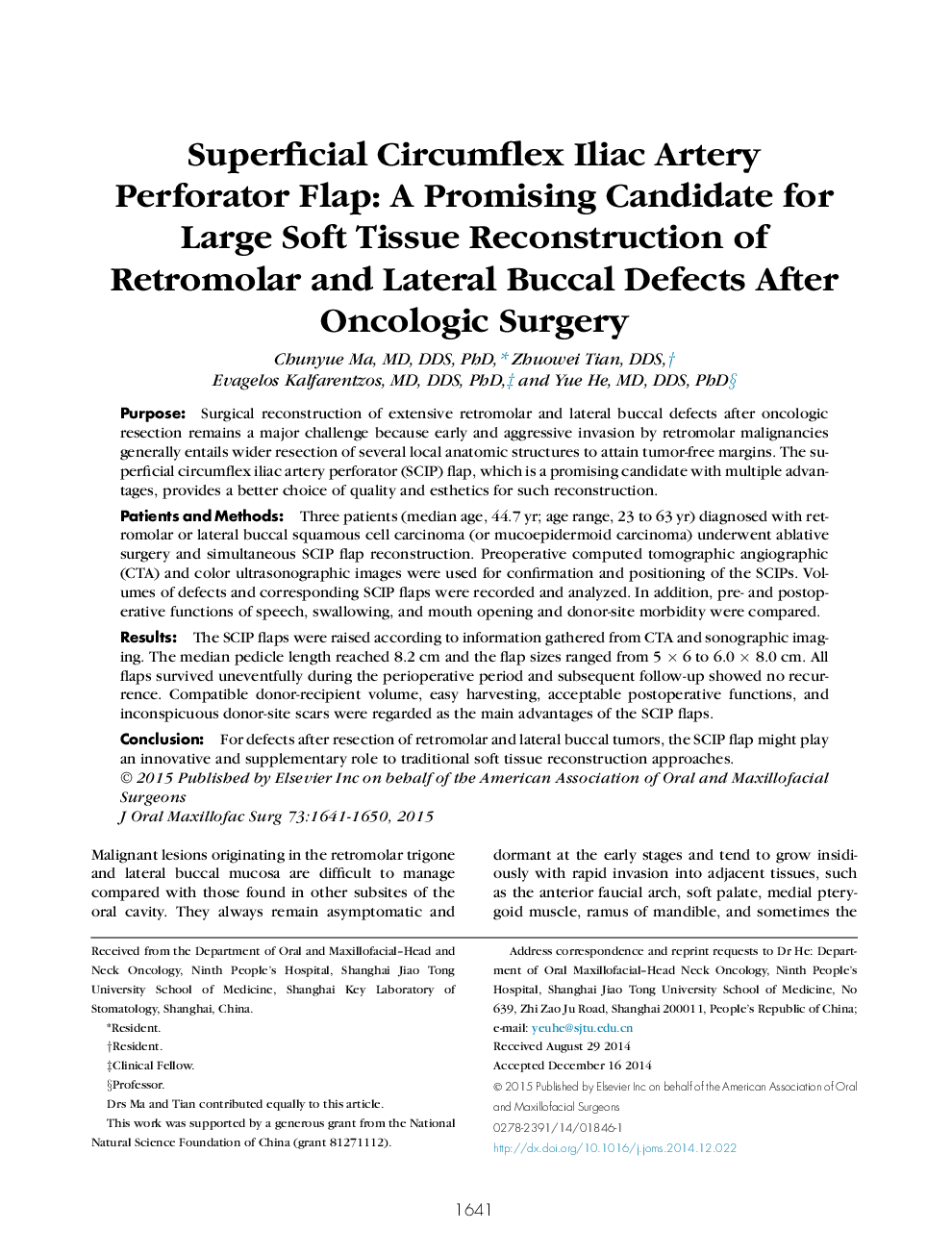| Article ID | Journal | Published Year | Pages | File Type |
|---|---|---|---|---|
| 3152340 | Journal of Oral and Maxillofacial Surgery | 2015 | 10 Pages |
PurposeSurgical reconstruction of extensive retromolar and lateral buccal defects after oncologic resection remains a major challenge because early and aggressive invasion by retromolar malignancies generally entails wider resection of several local anatomic structures to attain tumor-free margins. The superficial circumflex iliac artery perforator (SCIP) flap, which is a promising candidate with multiple advantages, provides a better choice of quality and esthetics for such reconstruction.Patients and MethodsThree patients (median age, 44.7 yr; age range, 23 to 63 yr) diagnosed with retromolar or lateral buccal squamous cell carcinoma (or mucoepidermoid carcinoma) underwent ablative surgery and simultaneous SCIP flap reconstruction. Preoperative computed tomographic angiographic (CTA) and color ultrasonographic images were used for confirmation and positioning of the SCIPs. Volumes of defects and corresponding SCIP flaps were recorded and analyzed. In addition, pre- and postoperative functions of speech, swallowing, and mouth opening and donor-site morbidity were compared.ResultsThe SCIP flaps were raised according to information gathered from CTA and sonographic imaging. The median pedicle length reached 8.2 cm and the flap sizes ranged from 5 × 6 to 6.0 × 8.0 cm. All flaps survived uneventfully during the perioperative period and subsequent follow-up showed no recurrence. Compatible donor-recipient volume, easy harvesting, acceptable postoperative functions, and inconspicuous donor-site scars were regarded as the main advantages of the SCIP flaps.ConclusionFor defects after resection of retromolar and lateral buccal tumors, the SCIP flap might play an innovative and supplementary role to traditional soft tissue reconstruction approaches.
